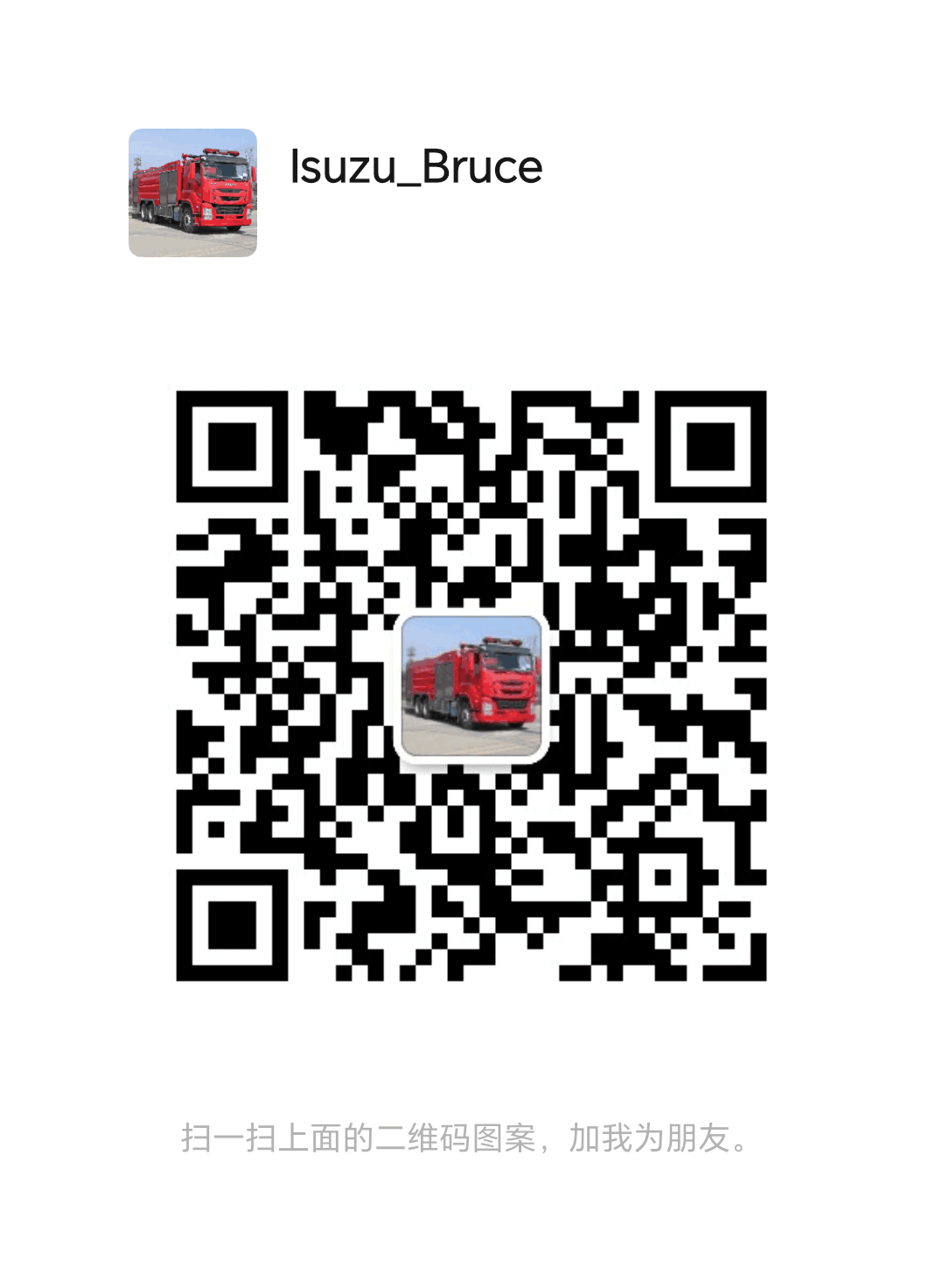


Proper firefighting operations by ISUZU fire truck have many important benefits for the ISUZU fire truck itself. First, it can effectively control the fire and extinguish the source of the fire, minimizing the size and impact of the fire. This helps protect the safety of the surrounding environment, property and people and prevents the fire from further expanding and spreading. Secondly, proper firefighting operations can protect fire truck equipment and equipment from fire damage. Fire trucks are expensive assets. Improper operation may cause the fire to rebound or equipment to be damaged, affecting its normal operation and ability to perform tasks. Therefore, correct fire extinguishing operations are crucial to protecting the fire truck itself. In addition, fire-fighting operations can also enhance the skills and experience of firefighters, improve their ability and efficiency to respond to fires, and ensure the safety and overall work efficiency of the fire-fighting team. To sum up, correct fire extinguishing operations are of great significance to fire trucks. They can control and extinguish fires, protect fire truck equipment, improve the professional level of fire fighters, and ensure the smooth progress of the fire team's work.
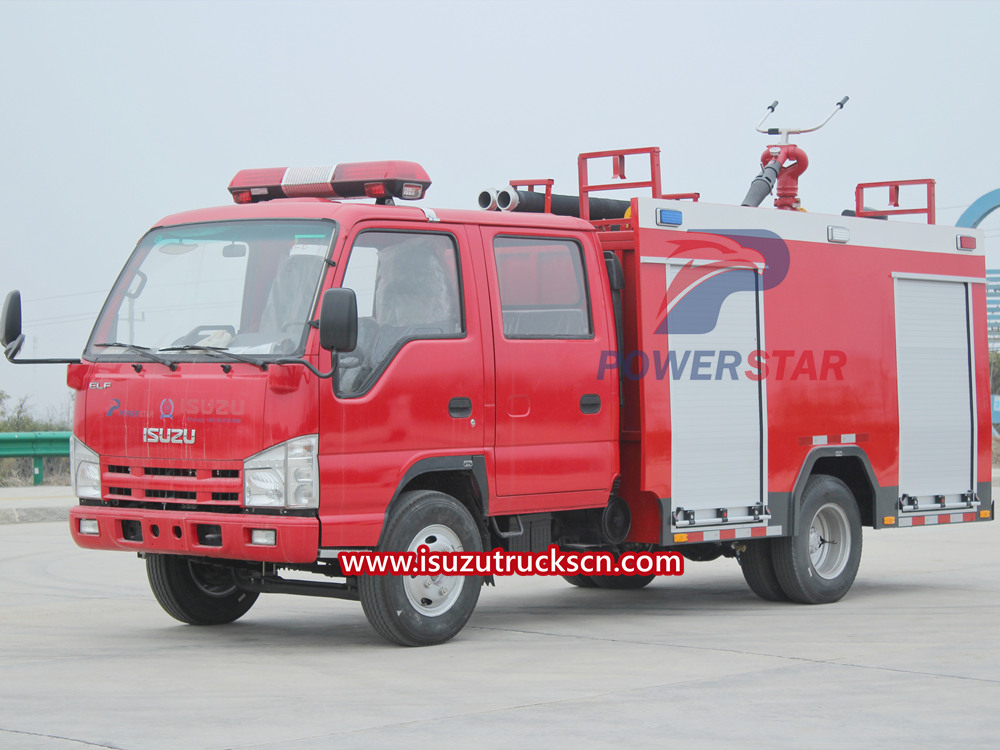
A. When fire-fighting vehicles enter the fire scene for fire extinguishing and rescue, there are several issues that should be paid attention to during operation:
1. After a fire-fighting vehicle enters a fire scene, it should stop the vehicle in the position designated by the fire scene commander. The parking posture of the vehicle can meet the needs of fire attack and retreat, and it must ensure that it can evacuate from dangerous positions flexibly and freely at any time. The vehicle engine must be kept running, and must not be blindly turned off, delaying the fighter jet. When the fire truck starts to supply water, the water pressure should be gradually increased to avoid casualties of combatants or explosion of water hoses due to the reaction force of the water cannon, which will affect the smooth progress of fire-fighting and rescue work.
2. During the process of connecting to the water source, attention should be paid to whether the water supply pressure of the fire hydrant can meet the needs of the fire truck. When drawing natural water sources, attention should be paid to the water depth and silt conditions of rivers and ponds to prevent water supply to the fire scene from being interrupted due to shallow water depth and the inlet of the water inlet pipe being affected by silt.
3. When the water source is far away from the fire scene and exceeds the direct water supply capacity of the fire truck, the fire truck relay water supply method should be used to provide water to the fire scene. The driver of the water supply truck should pay attention to the overflow situation of the overflow pipe of the water receiving truck and maintain an appropriate water supply. When the vehicle behind cannot observe the overflow situation of the vehicle in front, the driver of the vehicle in front can open the manhole on the upper part of the water tank of the vehicle to prevent the tank from swelling due to excessive water supply. During the water supply process, water-receiving trucks should choose hard roads to park. When hard roads cannot be parked, necessary measures should be taken to prevent the vehicles from getting stuck in the quagmire due to overflow. When directly coupling relay water supply, fire-fighting vehicles of the same model should be used as much as possible, and each vehicle must coordinate with each other to prevent water supply interruption due to improper operation. When the direct water supply pressure is high, care should be taken to maintain appropriate water pressure to prevent injury to combatants.
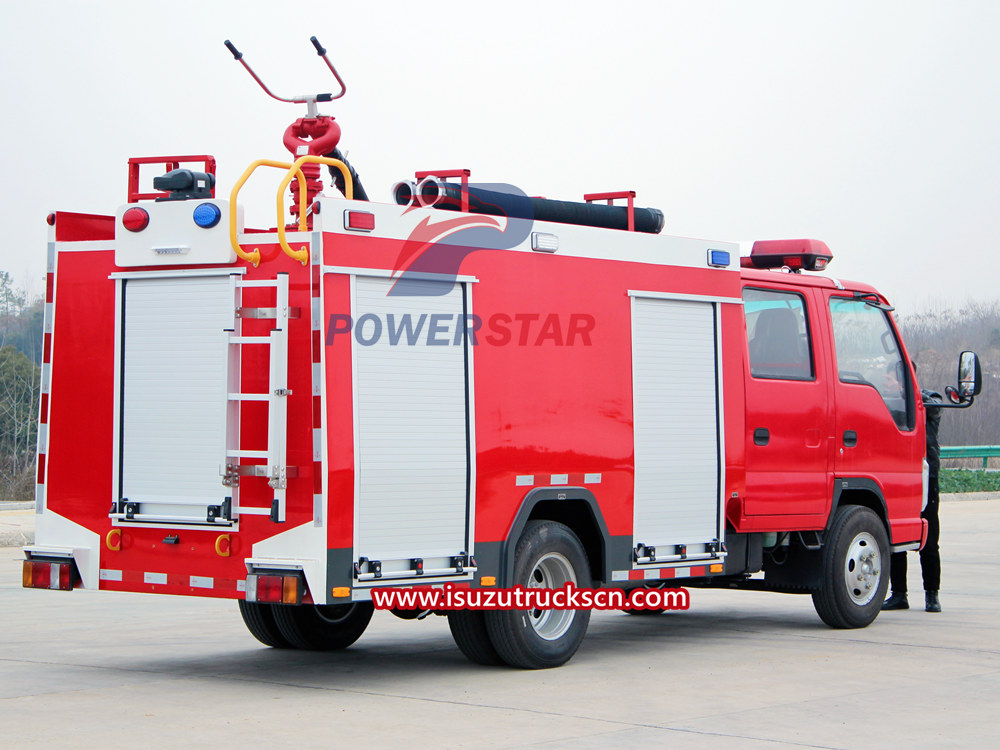
B. When the fire truck rushes to the fire scene and arrives at the fire scene, it must occupy a favorable position for fire-fighting and quickly engage in fire-fighting operations:
1. Fire trucks must ensure safety and speed when driving to the fire scene. Fire trucks should choose the fire truck passage closest to the fire scene. When multiple vehicles are dispatched, each workshop must maintain a sufficient safe distance (50 meters to 80 meters is appropriate). After arriving at the fire scene, it is important to avoid multiple vehicles entering the same combat area at the same time, which will prevent the fire scene commander from mobilizing vehicles to put out the fire in time, thereby delaying the fighter plane.
2. Fire truck drivers must resolutely obey the command of the fire scene commander on the fire scene and execute the commander's orders tactfully and flexibly to ensure the smooth implementation of the entire fire-fighting battle. When the fire situation undergoes irreversible changes and directly threatens the safety of the fire truck, the vehicle can be moved to a safer place to continue fighting, and the parking location of the vehicle can be reported in a timely manner.
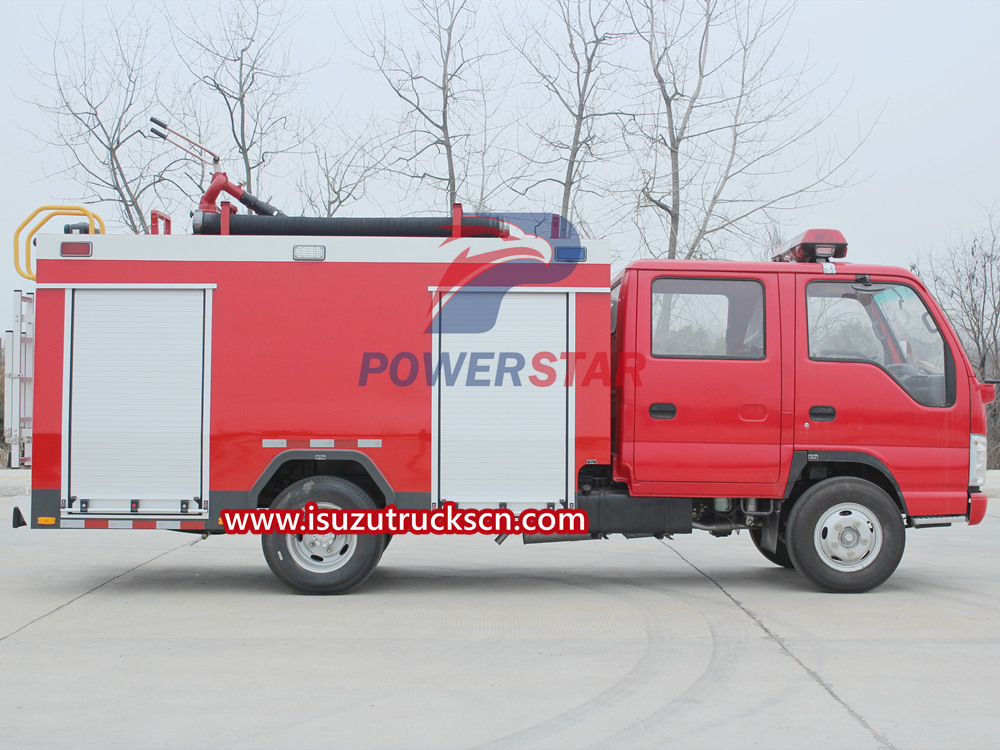
C. Prevent the occurrence of water hammer:
When pressurized water flows in pipes and fire hoses, due to the rapid closing of fire valves, fire hydrants, water guns, etc. and the weight of vehicles and other heavy objects crossing the pressure hoses, the water flow in the pipes and fire hoses instantly stops flowing, causing The water pressure in pipes and fire hoses rises instantaneously, and the increased water pressure acts like a hammer on pipes and fire hoses. This phenomenon is called water hammer. The increased pressure caused by water hammer in pipelines and fire hoses can reach several or even hundreds of atmospheres, causing damage to firefighting equipment and equipment such as pipelines and fire hoses, and directly affecting fire rescue work. Therefore, water hammer must be prevented during fire rescue.
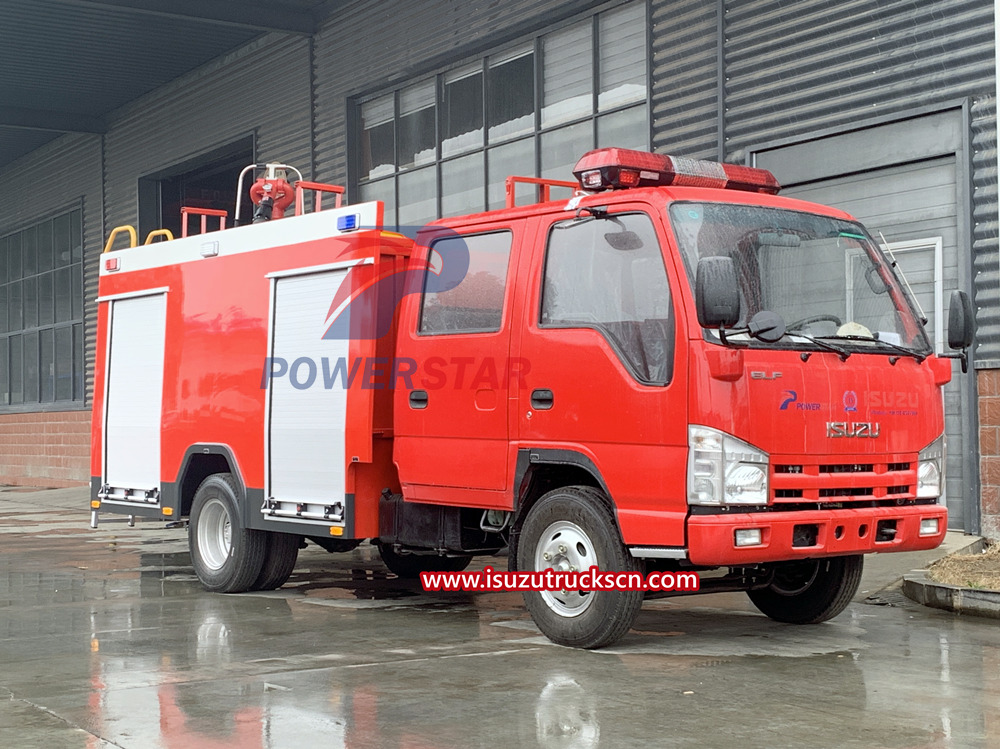
D. Precautions for daily maintenance of dry powder trucks and dry powder foam combined fire trucks and use at fire sites:
1. Regularly check whether the dry powder in the dry powder tank is agglomerated. When adding dry powder, prevent debris from mixing into it.
2. Conduct a water pressure and air tightness test on the dry powder tank according to the specified pressure every five years for 3 minutes. The pressure gauge value should not drop, and there should be no leakage or abnormal phenomena in each welding joint.
3. The inner cavity of the dry powder gun (gun) should be purged promptly after use to avoid corrosion and blockage of the dry powder gun (gun).
4. Frequently check the condition of nitrogen and dry powder pipeline joints and valves, find problems and solve them in time. Check the pressure in the nitrogen cylinder every three months. When the pressure in the cylinder is lower than 12MP, it should be re-inflated.
5. When the dry powder truck (dry powder and foam combined truck) is used at the fire scene, the amount of dry powder required to extinguish the fire should be accurately calculated based on the actual conditions of the fire scene, and at the same time, the dry powder truck (dry powder and foam combined truck) should be as close to the fire source as possible , aim at the fire point and strive to put it out successfully in one go. When using dry powder trucks to rescue petrochemical fires, the fire scene commander should mobilize corresponding forces as needed and do a good job of covering. At the same time, he should consider using foam trucks to attack later to prevent re-ignition and provide a strong guarantee for successful fire fighting.
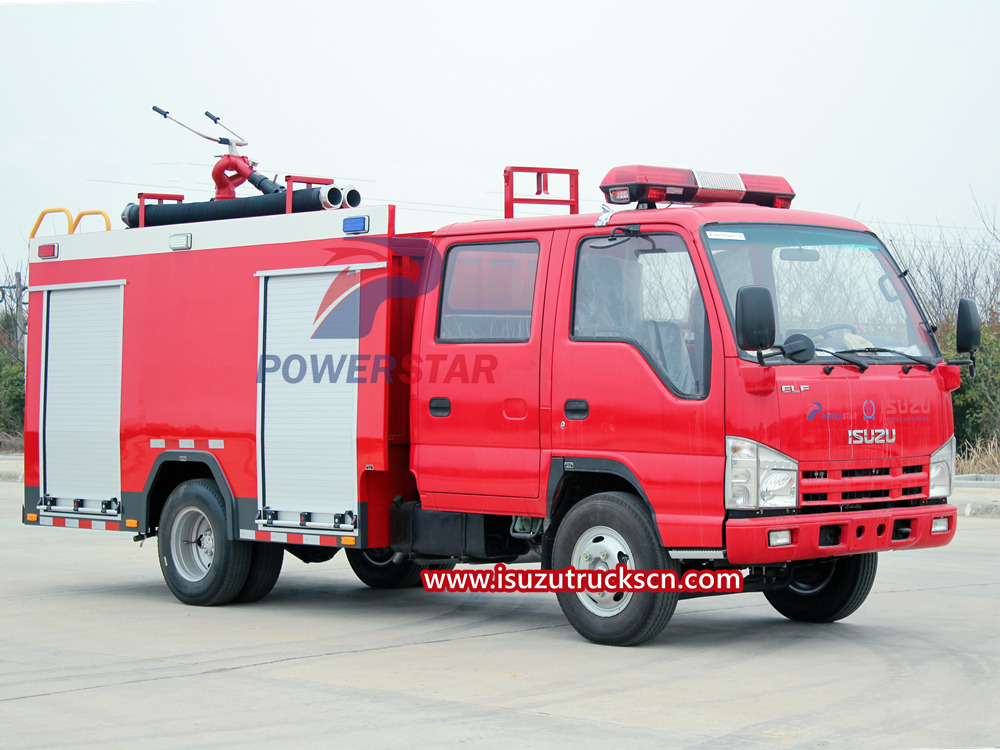
E. The correct use of foam fire trucks in fire scenes is the basis for extinguishing petrochemical fires:
Foam fire trucks are necessary equipment to fight fires in petroleum, chemical industry, factories and mining enterprises, port cargo yards, etc. Since it also has the performance of a water tank fire truck, the correct use of a foam fire truck is an issue worthy of attention for every fire scene commander. Due to the special properties of foam fire trucks, most of the fire scenes faced by this kind of fire trucks are fire scenes with high risks such as petrochemical industries. This type of fire has the characteristics of fast burning speed, frequent changes in fire scene conditions, high probability of explosion and combustion, and great threat to fire trucks and combatants. Therefore, in order to enable foam fire trucks to quickly launch fire-fighting operations after arriving at a favorable location on the fire scene, The following points must be noted:
1. The foam fire truck should face the fire scene with its side and rear parts, quickly discharge water, and increase the pressure to the appropriate level (taking the Dongfeng fire truck as an example, the pressure is ≥0.686MP when using the PQ8 gun, and the pressure is ≥0.785MP when using the vehicle-mounted gun). , open the pressure water cock, then open the foam tank outlet ball valve, adjust the mixer to the appropriate position, aim at the center of the flame, and spray the foam liquid.
2. When using a foam cannon for close combat, necessary protection should be provided to the fire truck according to the fire situation. The car body can be covered with asbestos cloth, and water spray can be used for protection when necessary.
3. During the entire fire fighting process, the driver must stick to his position, constantly pay attention to the immediate residual amount of foam liquid in his vehicle, and add foam liquid in time. Once the foam liquid is exhausted and refilled, it will inevitably affect the entire fire-fighting operation.




